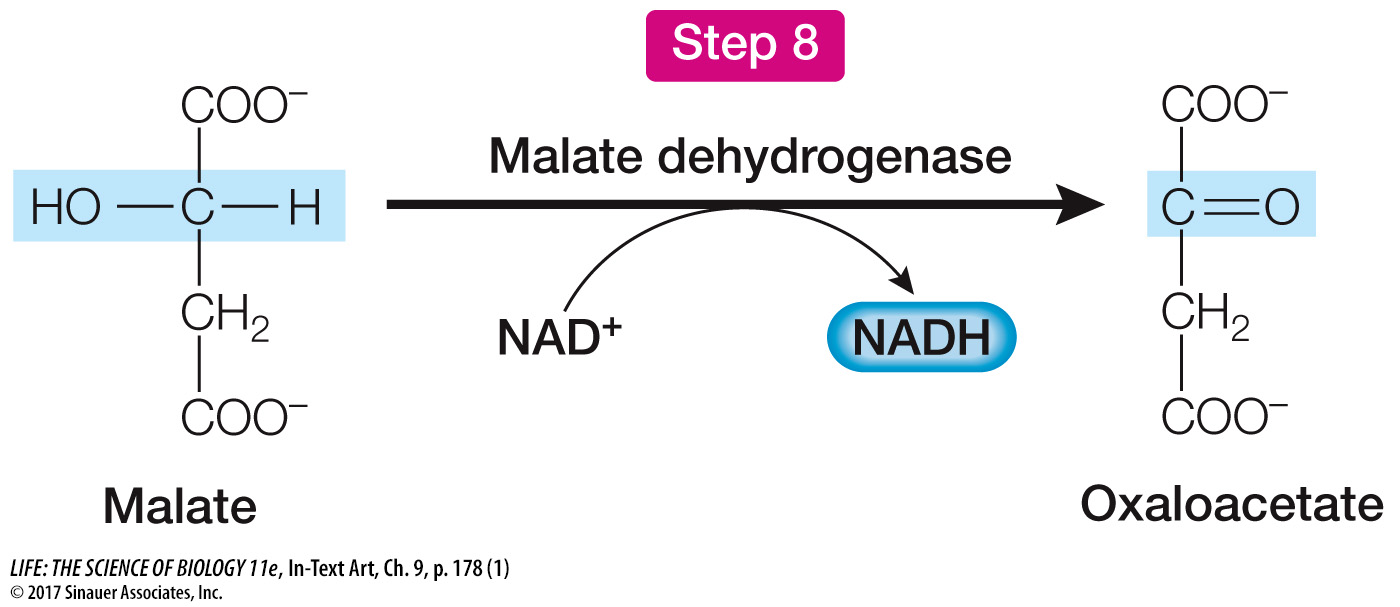The citric acid cycle completes the oxidation of glucose to CO2
Acetyl CoA is the starting point for the citric acid cycle. This pathway of eight reactions completely oxidizes the two-

Activity 9.3 The Citric Acid Cycle
Let’s focus on the final reaction of the cycle (Step 8 in Figure 9.6), as an example of the kind of reaction that occurs:

This oxidation reaction (see the carbon atom highlighted in blue) is exergonic, and the released energy is trapped by NAD+, forming NADH. With four such reactions (the FADH2 produced in Step 6 is a reduced coenzyme similar to NADH), the citric acid cycle harvests a great deal of chemical energy from the oxidation of acetyl CoA.
To summarize:
The inputs to the citric acid cycle are acetate (in the form of acetyl CoA), water, GDP, and the oxidized electron carriers NAD+ and FAD.
The outputs are carbon dioxide, reduced electron carriers (NADH and FADH2), and a small amount of GTP. The energy in the terminal phosphate of GTP is transferred to ATP:
GTP + ADP → ATP + GDP
Thus the citric acid cycle releases two carbons as CO2 and produces four reduced electron carrier molecules.
Overall, for each molecule of glucose that is oxidized, two molecules of pyruvate are produced during glycolysis, and after oxidation these feed two turns of the citric acid cycle. So the oxidation of one glucose molecule yields:
Six CO2
Ten NADH (two in glycolysis, two in pyruvate oxidation, and six in the citric acid cycle)
Two FADH2
Four ATP